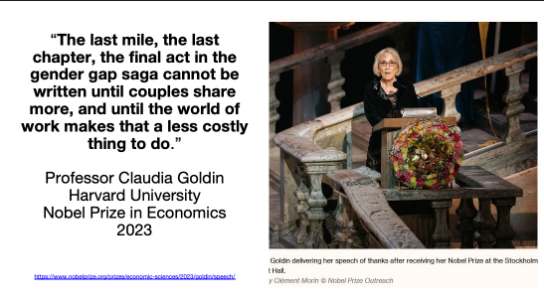Today, the Luc Beauregard Centre for Excellence in Communications Research at Concordia University welcomed Professor Debbie Dougherty from the University of Missouri, who gave a fascinating talk about sexual harassment in organizations and about the role of communication in sexual harassment. Communication is about the creation of meaning; in other words, when we talk about something we say what that something means. We use talk to give meaning to sexual harassment and to everything that has to do with sexual harassment.
The meanings that we attribute are interwoven with our perspective on life, work, gender roles, privacy, morality etc. This perspective is something we acquire and internalize as we grow up, move through adolescence, enter organizations and become organizational members. It then follows that meanings that we give to sexual harassment are linked to the cultures in which we have been and are embedded. It also follows that sexual harassment concerns not just an interpersonal relations between only two individuals, as it is often approached in the legal framework. Instead, sexual harassment concerns something larger than an interpersonal relation, that is, a culture or a set of cultures in which relations take place and which nourish how individuals view others and their roles in how they relate to others.
The meanings that we attribute to sexual harassment have implications for the actual sexual harassment that takes place. For instance, meanings that we attribute to behaviors have repercussions for what is seen as morally right and wrong. Meanings that we attribute to individuals and roles that we give them have consequences for how the perpetrator and the target of sexual harassment live the experience, for whether perpetrators act, for whether targets report. Meanings that we attribute to sexual harassment policies have implications for how these policies are understood, acted on, implemented and enforced.
Sexual harassment, then, is tied to how organizational actors talk about it and construct meanings of it. Talk, in turn, is not simple. Instead, organizational members often struggle with how they talk about sexual harassment and with the meanings they assign to sexual harassment. They are unclear with regard to themselves about how they interpret sexual harassment, and they agree or disagree with other organizational actors on sexual harassment, what it is and what it is not.
Professor Dougherty showed in her talk how organizational actors use metaphors in how they talk about sexual harassment and about policies regarding sexual harassment. Organizational actors refer to shading, talking about how sexual harassment can be thought of being black and white rather than grey (or not). They talk about lines, and how lines about sexual harassment can be bright or fuzzy. They talk about their organization as a family, and how dealing with sexual harassment is akin to how interacting with family members or with people who live in the same house.
The metaphors that emerged from Professor Dougherty’s analysis showed the variety of ways in which organizational actors understand and give meaning to sexual harassment and sexual harassment policies. This variety can make sexual harassment very confusing and ambiguous. This variety, and the ambiguity that it creates about sexual harassment, has implications for sexual harassment policies and their implementation. More specifically, it affects how organizational actors answer question like “Is a particular behavior sexual harassment?”, “How do we enforce a policy?”, “When do we report a behavior?”.
Talk, in other words, is not just talk. Talk can lead to, moderate or prevent behavior.









